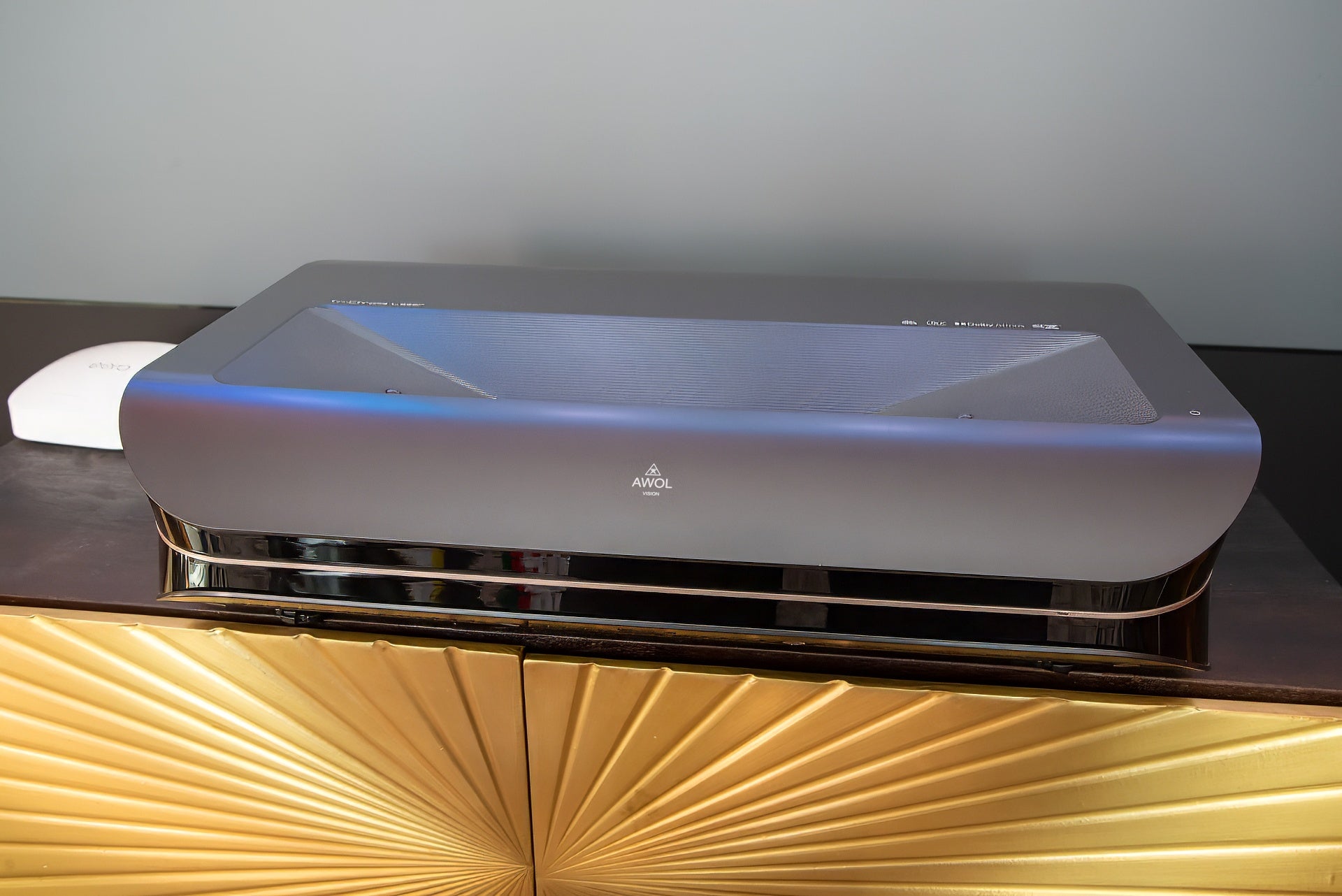Optoma UHZ66 Review
Stellar big screen gaming with lightning fast responses



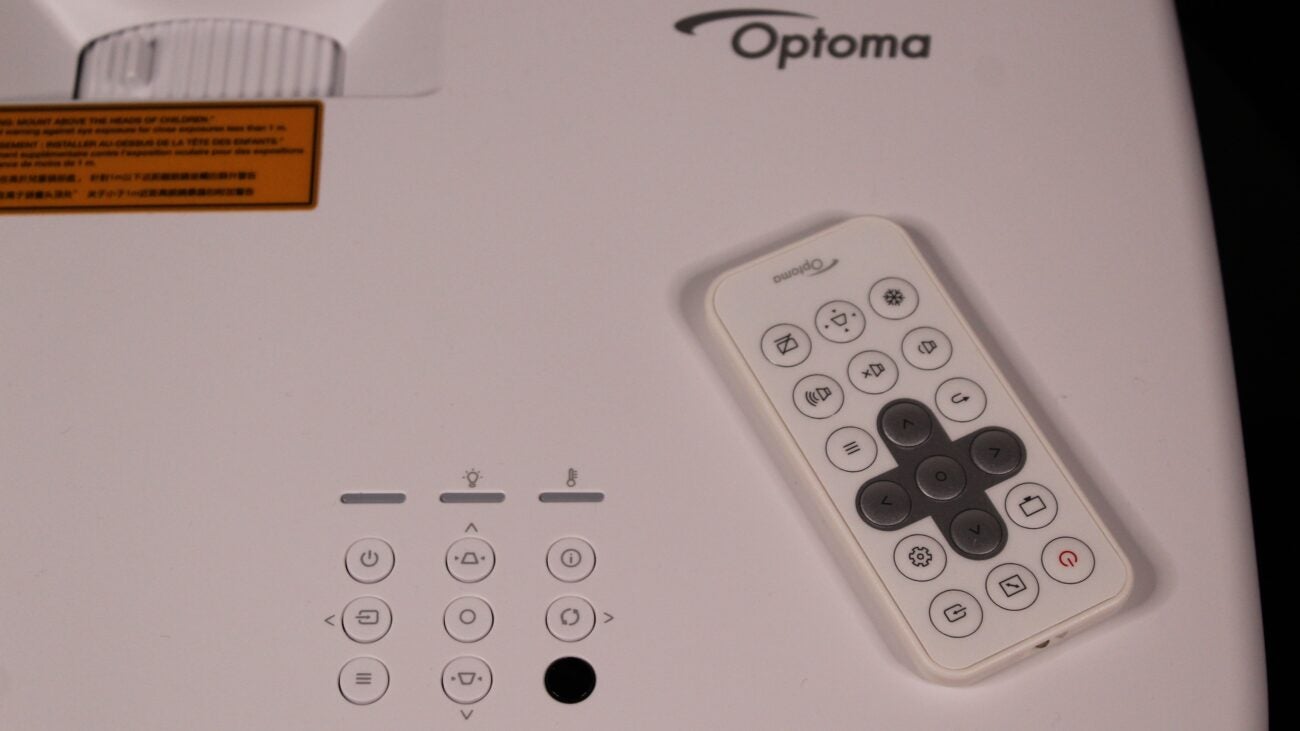


Verdict
If you’re looking for a bright and immersive gaming experience, plus the kind of latency usually associated with a dedicated monitor, this DLP projector is for you. It’s not perfect, but the 4K images are sharp and the HDR has real pop. The blacks are weak, the colours could go wider, the setup is limited and there’s no support for 4K/120Hz, but otherwise this capable and affordable beamer is just the ticket.
Pros
- Extremely sharp 4K HDR images
- Incredibly bright laser light source
- Super-low latency for a projector
Cons
- Blacks are weak, even for DLP
- Setup options are very limited
- No support for 4K/120 gaming
Key Features
- 4K Ultra HD supportResolutions up to 3820 x 2160 pixels
- Laser-powered light source4000 lumens for up to 30,000 hours
- HDR supportHigh dynamic range using HDR10 or HLG
Introduction
Optoma clearly has its corporate sights set on the lucrative gaming market if the new UHZ66 is anything to go by, offering super-bright immersive images and incredibly low input lags.
Thanks to a laser-powered light source this 4K HDR DLP beamer is capable of generating 4000 lumens, which is easily enough to light up a screen with a 300in diameter. A lifespan of 30,000 hours means you can enjoy marathon gaming sessions without worrying about the image dimming, while latency measurements as low as 4ms will keep twitch-trigger gamers happy.
All of which makes the Optoma UHZ66 a very interesting and affordable big screen projector, but does it live up to its potential?
Availability
The Optoma UHZ66 is currently available and affordably priced at £1,749 in the UK, $2,999 in the US, €3,059 in Europe, and $2,999 in Australia. This is a crowded market place, with no shortage of DLP projectors at or below this price point, so the UHZ66 will really need to deliver if it wants to stand out from the competition.
Design
- Standard white plastic chassis
- Relatively compact and light weight
- Small and fiddly remote control
The Optoma UHZ66 looks like every other DLP projector at this end of the market, with a boxy white plastic chassis, lens offset to the right, connections at the rear, and air vents on either side for cooling. The build quality is reasonable, but overall it’s a relatively compact and light weight beamer.

The lens controls for focus and zoom are situated around and above the lens itself, while on top of the chassis there are buttons for installing, setting up and operating the projector. However, you’ll only need to resort to these controls if you accidentally misplace the beamer’s provided remote.

Unfortunately, you probably will lose the included remote because it’s the kind of credit card-sized controller that often ends up down the back of the sofa. This zapper uses icons to identify each blister-type button, and there’s also no backlight, which makes it tricky to operate the UHZ66 in the dark.
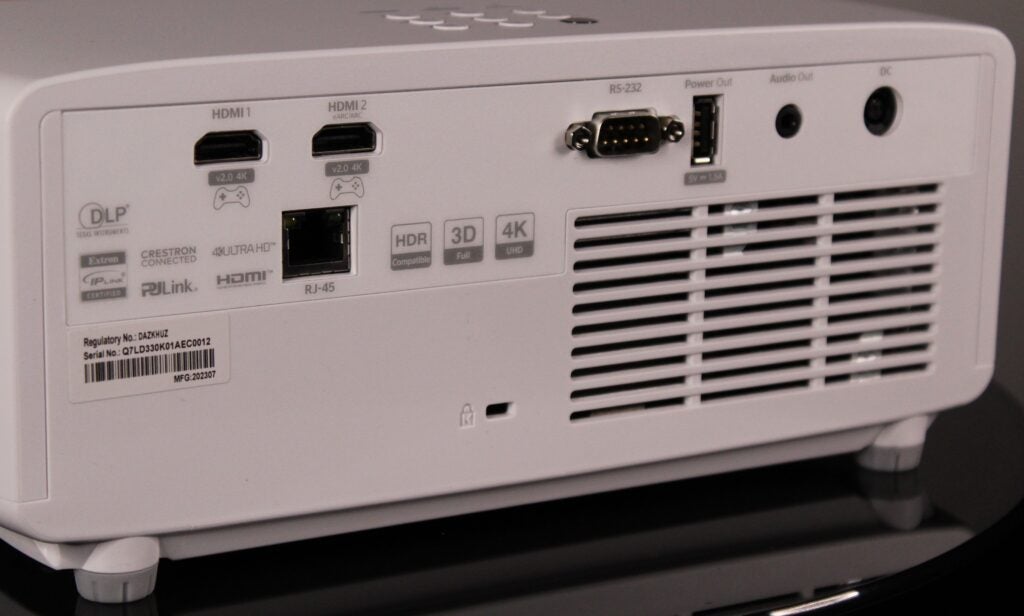
At the rear you’ll find two HDMI 2.0 inputs (one of which supports eARC), RS-232/LAN connectors for serial control, a 3.5mm audio output, and a USB port for power. The lack of HDMI 2.1 inputs means the projector is limited to 4K/60Hz, but it can support 1080p Full HD gaming at up 240Hz.
Features
- 4K HDR10/HLG/Full HD 3D support
- Laser-powered light source with 4000 lumens of brightness
- Very low latency for gaming
- Integrated speaker
The Optoma UHZ66 isn’t exactly packed with features, but for a projector at this price point economies of scale will only go so far and something has to give to keep the cost down.
The beamer supports resolutions up to 4K Ultra HD (3840 x 2160), although it’s worth pointing out the DLP chipset isn’t native 4K but actually Full HD (1920 x 1080). However, thanks to its 240Hz refresh rate the image can be repeated four times per a frame to build up a picture that appears 4K – unless you start looking at professional test patterns.
The headline feature is definitely the UHZ66’s laser light source, which not only delivers retina-burning brightness of up to 4000 lumens, but a claimed lifespan of up to 30,000 hours. That basically means you can use this projector to game or watch movies and sports broadcasts for decades without having to worry about a degree of ambient light in the room or replacing a lamp.
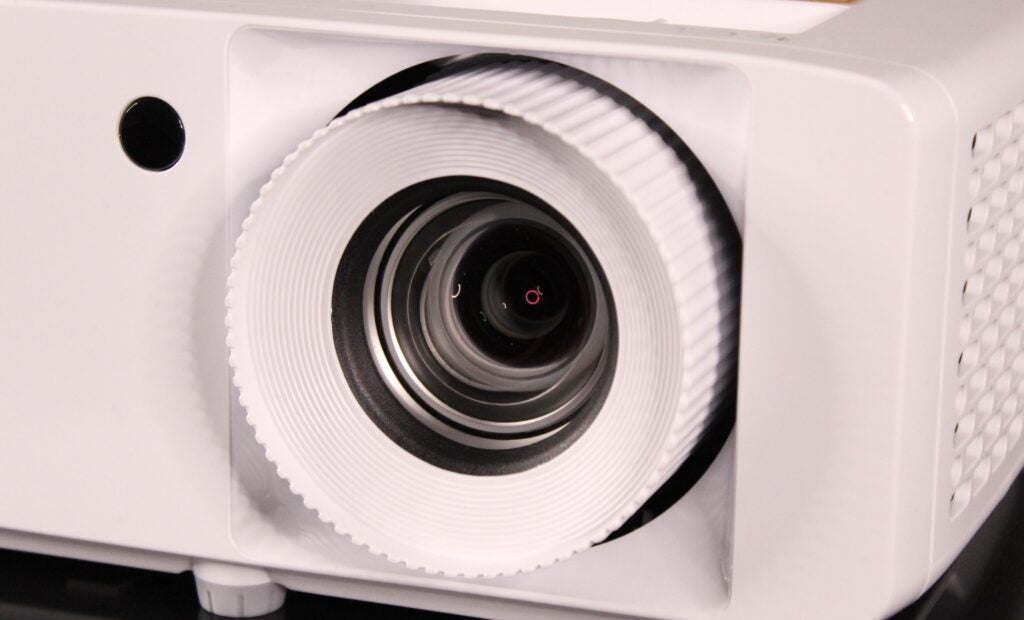
Longevity isn’t the only advantage a laser has over a traditional projector lamp, and the Optoma delivers all this blinding brightness without generating excessive heat (although a degree of cooling is still required). It’s also more consistent, retaining its colour characteristics and not dimming significantly over most of its 30,000 hour lifespan.
The UHZ66 supports high dynamic range in the form of HDR10 and HLG (hybrid log-gamma), and Optoma includes effective tone mapping to reproduce HDR pictures where the shadows are free of crush, the brighter highlights don’t lose detail due to clipping, and the colours retain their depth and nuance within the limitations of the projector’s colour gamut.
One of the big advantages of DLP is its fast response times, and this extends to the projector’s ability to handle multiple frame rates up to 240Hz. These impressively high frame rates are backed up by lightning fast latency measurements, with extremely low lag times for a projector, going down to 17ms for 4K/60Hz and all the way to 4ms for 1080p/240Hz.
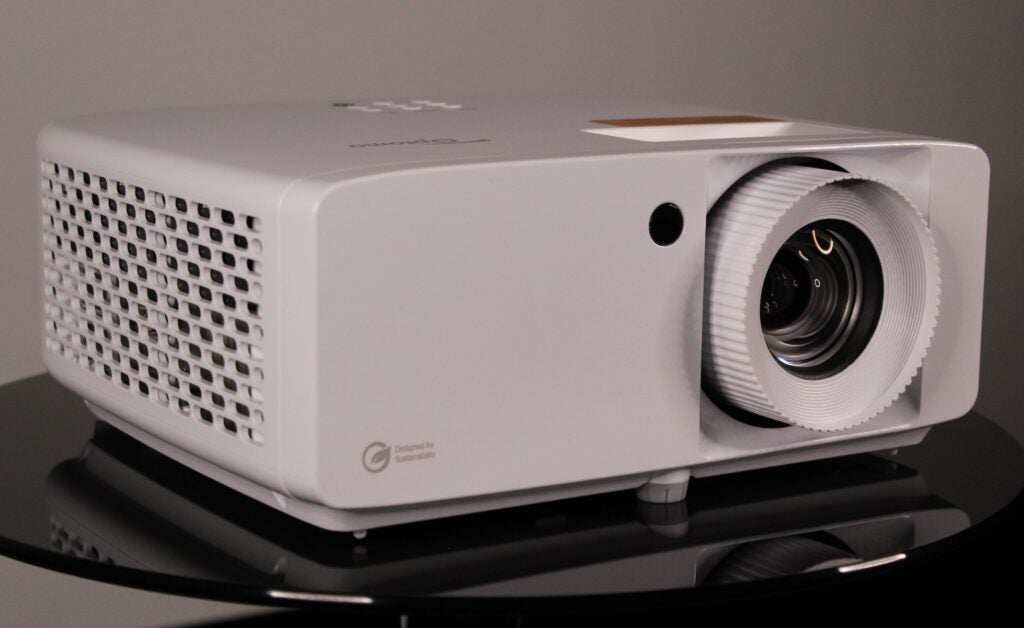
If you have a large collection of 3D Blu-rays you’ll be delighted to discover the UHZ66 fully supports the third dimension. You’ll need to buy additional third party active shutter glasses, but the brightness of the laser light source, along with DLP’s incredibly fast response times results in superb 3D with punchy images and no annoying cross talk.
The UHZ66 has an integrated speaker with 15W of amplification, which is fairly common for projectors in this segment of the market,. While this built-in sound system is hardly sufficient for the latest blockbuster movie or an immersive gaming session, it is handy if you quickly need audio without having to connect and turn on a load of other equipment.
In terms of missing features, while the lack of HDMI 2.1 inputs isn’t surprising for a projector at this price, it means no support for 4K/120Hz or HDR10+ and the benefits of dynamic metadata. The manual lens controls don’t allow for lens memories either, so if you’re using a wider aspect ratio screen you should look elsewhere for your projector.
Setup and operation
- Manual zoom and focus lens controls
- Third party control options
- Possible rainbows
- Fans are quite noisy
The Optoma UHZ66 is easy to install thanks to its small form factor and light weight construction. There’s a choice of stand or ceiling mount, with the projector in front or behind the screen, but the manual lens controls are very limited with only zoom and focus. So you’ll need to physically move the beamer for vertical and horizontal orientation, but there are feet for levelling the image.
If you find the lack of vertical and horizontal lens controls are causing you problems, there are also keystone controls for correcting any geometric errors. However, this additional processing does rob the projector of some fine detail. The 1.6x zoom can create a 100-inch image from a distance of around 2m, and for larger rooms you can even beam a pin-sharp image up to 300-inch in size.
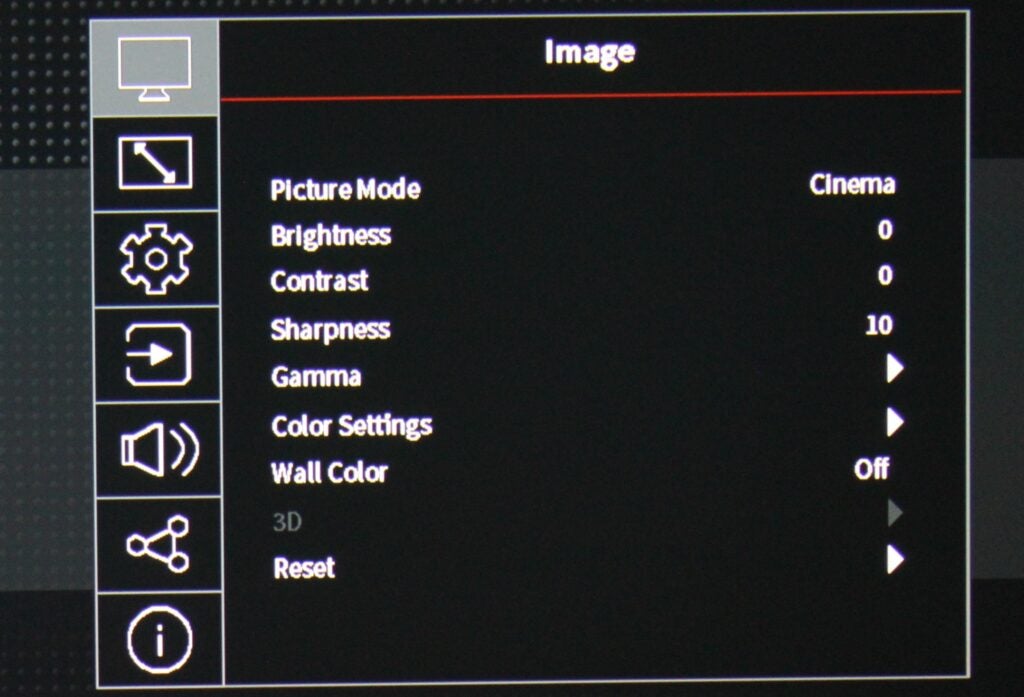
In terms of operation, the UHZ66’s single-chip DLP design results in very sharp images, but unfortunately this approach uses a colour wheel which can cause ‘rainbow’ artefacts. While this won’t affect everyone, if you can see this type of colour-fringing the UHZ66 isn’t the best choice and you should consider a projector that doesn’t use a colour wheel.
Another annoying side effect of the colour wheel is a high-pitched noise created as it wizzes around, although due to the 4000 lumens of light output the fans are also fairly loud, hitting anywhere from 28 to 35dB. On the plus side, all this luminance means you can use the UHZ66 in a room with white walls or a degree of ambient light and still enjoy a bright image.
Performance
- Extremely bright images and punchy HDR performance
- Weak black levels
- Limited colour gamut
- Excellent motion handling
- Responsive gaming experience
The Optoma UHZ66 delivers bright and impactful big-screen pictures that retain plenty of sharpness thanks to the single-chip DLP design and support for 4K imaging. The upscaling and picture processing is also competent, and thanks to all that extra luminance the SDR, and especially HDR images, burst with bright and vibrant highlights.
Optoma includes a number of picture modes, and for those seeking accuracy in a dark room the Reference mode is the best choice. However, if there’s some ambient light in the room the Bright mode really comes in handy as it boosts the overall luminance while still retaining a pleasing level of image accuracy, ensuring you’re seeing what the content creator’s originally intended.
The UHZ66’s inherent brightness really pays dividends with HDR, where all those extra lumens give images plenty of ‘pop’, while effective tone mapping gets the best out of this type of content by retaining detail in both the shadows and specular highlights. The colour reproduction is also good, although limited to Rec.709 so you don’t get the full wide colour gamut of HDR.
One area where DLP beamers are particularly strong is motion handling, because of the incredibly fast response times of the technology, and here the UHZ66 is no exception. There’s a remarkable smoothness to movement, with movies retaining that all important film-like quality while also appearing free of judder or other artefacts that affect less capable display technologies.
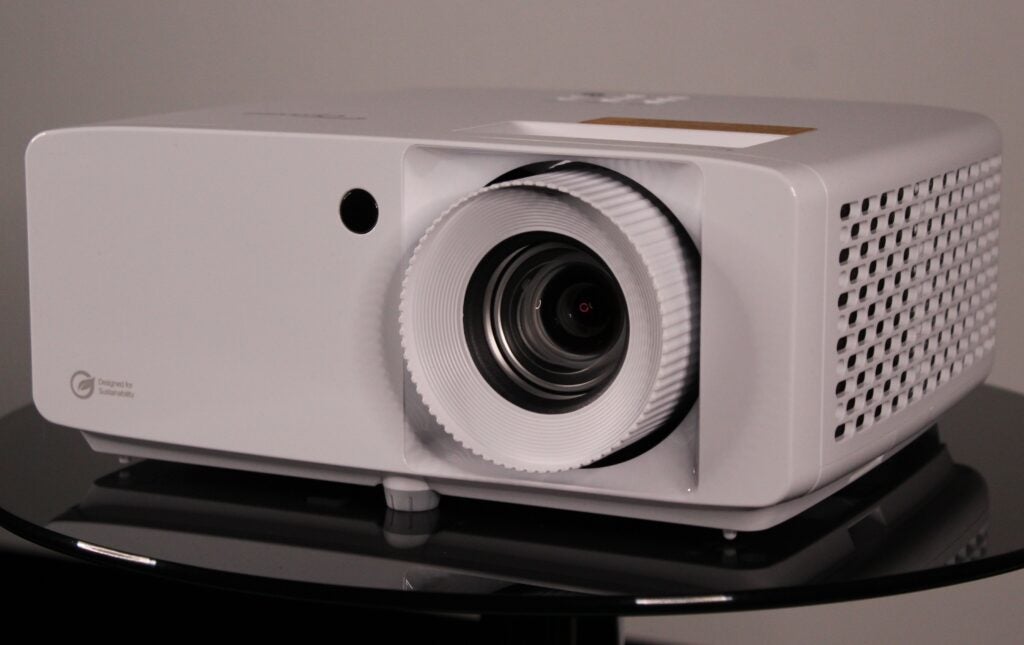
While DLP projectors may be great with motion, they often struggle when it comes to black levels, and the UHZ66 suffers here with blacks that appear more like a dark grey. This immediately robs the contrast ratio of much of its impact, and it’s certainly nowhere near the 500,000:1 claimed by Optoma. However, given the brightness of the overall image this is less of an issue, especially with white walls where any reflected light will wash out the contrast.
Watching Oppenheimer immediately reveals the UHZ66’s ability to produce exceptionally detailed images, with the sun-bleached New Mexico landscapes really benefitting from all that extra brightness. The colours may lack the saturation of a display with a wider colour gamut, but the brightness means the Trinity test remains shocking, especially the flash of the atomic explosion.
Where the UHZ66 tends really struggles is with a darker film like The Batman, with its rain-soaked alleyways, and night scenes filled with looming shadows. Here the Optoma fails to deliver the inky blacks this film’s cinematography demands, and while the neon and wet streets retain some vibrancy, the shadows often descend into a grey mess where details are lost along with any impact.
To be fair, the UHZ66 is really aimed at gamers rather than film fans, and here it delivers thanks to its superb motion handling that results in slick gameplay at 4K/60Hz, and even smoother gaming if you have a PC rig capable of 1080p Full HD at 240Hz. This is backed up by incredibly low input lags that go down to 17ms for 4K/60Hz and a ridiculously low 4.4ms for 1080p/240Hz.
The result is a hugely enjoyable gaming experience whether you’re using a next-gen console or the latest souped-up gaming PC. Select the Game preset and you’ll immediately be rewarded with images that are sharp, detailed, and colourful, while the very capable tone-mapping ensures accurate HDR for gaming that fills your field of view with vibrant pictures that are sure to please.
Latest deals
Should you buy it?
You want a projector for gaming
Pin sharp 4K images, super bright HDR, smooth motion, a low input lag, and long life laser light source make this projector a great choice for gamers.
You want a projector for movies
The weak blacks and limited colours aren’t ideal for movies, and while the picture looks good with brighter scenes, there are better choices for film fans.
Final Thoughts
The Optoma UHZ66 is a solid addition to the brand’s 4K HDR projector line-up, offering the kind of performance and features that will appeal to gamers not interested in playing at 4K/120Hz. Film fans may be less impressed, but this beamer delivers affordable super-bright big screen images.
How we test
We test every projector we review thoroughly over an extended period of time. We use industry standard tests to compare features properly. We’ll always tell you what we find. We never, ever, accept money to review a product.
Find out more about how we test in our ethics policy.
Tested for more than a week
Tested with real world use
FAQs
This projectors features an input lag of 17ms for 4K/60Hz and 4ms for 1080p/240Hz
There is Full HD 3D support using compatible active shutter glasses, although the glasses are available separately.
This projector is capable of displaying high frame rates up to 4K/60Hz and 1080p Full HD at 240Hz






